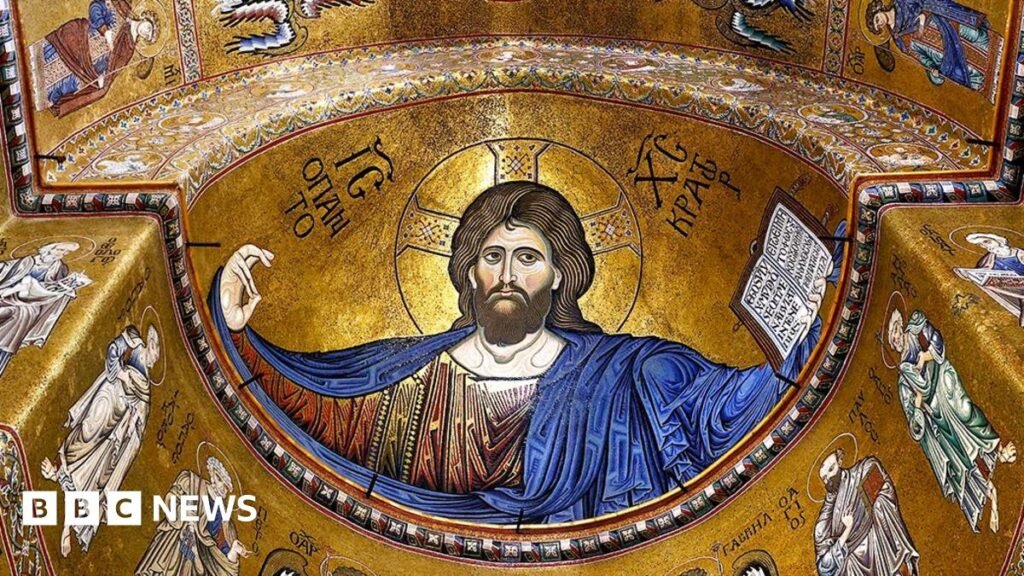The restoration lasted more than a year, and during this time the cathedral turned into a kind of construction site with a labyrinth of scaffolding installed on the altar and transept.
Local experts from the Italian Ministry of Culture carried out a series of interventions, starting with the removal of a thick layer of dust that had accumulated on the mosaic over the years.
They then repaired some of the tiles that had lost their enamel and gold leaf, making them look like black spots underneath.
Finally, they intervened where the tiles were peeling from the wall and fixed them.
Working on the mosaic was a challenge and a great responsibility, says Father Nicola Gallio.
He was a priest here for 17 years and closely followed the restoration, not unlike a wary father.
“The team approached this work almost on tiptoe,” he tells me.
“Sometimes there were some unforeseen problems and they had to stop work while they found a solution.
“For example, when they got to the ceiling, they realized that in the past it had been covered with a layer of varnish that had turned yellowish. They had to take it off, literally like cling film.”

